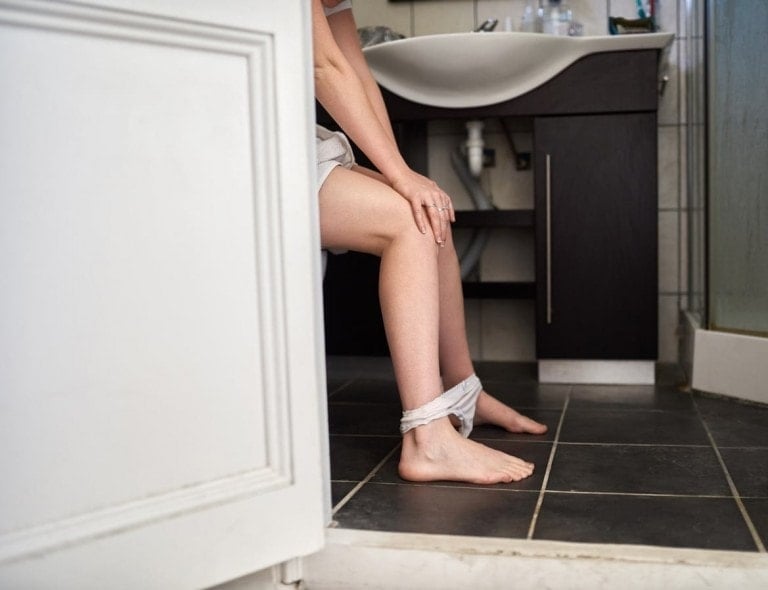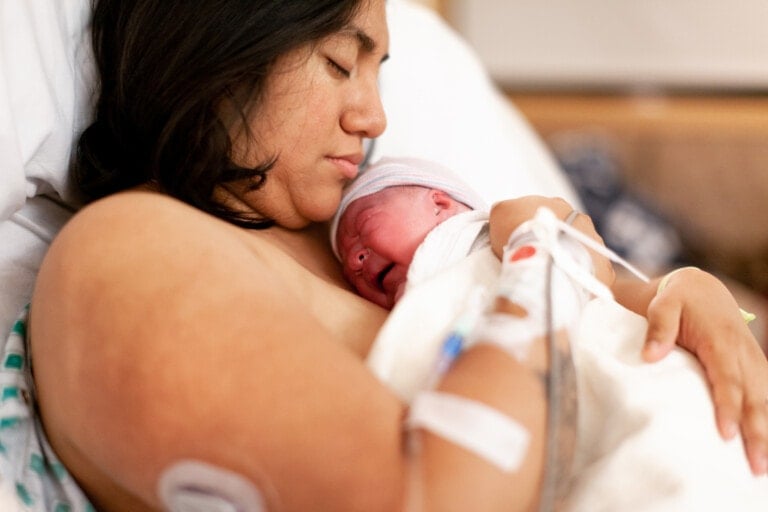Imagine this: After welcoming your newborn into the world, you are peacefully bonding with them, admiring fingers and toes, or perhaps latching them to the breast for the first time. Then your labor and delivery nurse arrives to check your vaginal bleeding. Hello, uterine massage after birth, also known as a fundal massage. But there are no spa-like vibes here.
Regardless of how your baby entered the world, whether by Cesarean section or vaginally, with an epidural or without, uterine or fundal massage may be an integral part of your immediate “recovery” after delivery to monitor uterine involution, which is the process of the uterus returning to a pre-pregnancy state. So, how will your nurse perform a uterine massage, and is it necessary?10
What is a Uterine Massage?
Uterine or fundal massage is the unpleasant rubbing of your uterus. With one hand stabilizing your uterus at your pubic bone, your nurse or obstetric provider will use the other to provide downward and inward pressure on your stomach to firmly rub the fundus or the top part of your uterus. This will cause the uterine muscles to contract and the uterus to become firm.2
Muscular contraction of the uterus begins uterine involution, or the process of your enlarged uterus returning to its pre-pregnancy size and position. Uterine involution starts immediately after delivery and will assist in managing the bleeding that typically accompanies childbirth.2,8
Uterine massage is currently considered a part of routine postpartum care management. It is an experience that nearly every postpartum parent will likely encounter, especially if delivering in a hospital.1
Reasons for a Uterine Massage
As the placenta detaches from the uterine wall, the spiral arteries of the uterus that feed the placenta are left exposed and bleeding. Spiral arteries are unique because they have no musculature that helps them contract independently.11
The uterus must contract to compress these arteries and stop blood flow from where the placenta once attached. The body’s natural release of oxytocin will cause the uterus to contract. Occasionally and for various reasons, your uterus may be “boggy” or too relaxed after delivery. A relaxed or atonic uterus post-delivery will lead to increased bleeding. In this instance, uterine massage encourages the uterus to contract and may control bleeding.2,6
Uterine massage is an excellent tool to express blood clots that may restrict uterine contraction, evaluate postpartum bleeding, and monitor uterine involution. Uterine massage will be used with other medical interventions if bleeding is significant.2
When Will This Happen?
Your provider can perform a uterine massage immediately after the birth of your baby, before or after the delivery of the placenta. The two hours following any delivery are critical for monitoring uterine firmness and assessing vaginal bleeding. During this time, uterine massage may be performed as often as necessary, generally every 10 to 15 minutes, to ensure a firm fundus and appropriate postpartum bleeding.1
Once your labor and delivery recovery are complete, uterine massage may only be performed every 12 hours by your nurse unless there is a need for more frequent massage or further interventions for active bleeding.
What is a Postpartum Hemorrhage?
It is challenging to discuss uterine massage without briefly addressing postpartum hemorrhage. Postpartum hemorrhage (PPH), or severe bleeding after delivery, is a significant cause of maternal illness and death during childbirth. Ineffective uterine contraction post-delivery accounts for 75% of PPH cases.1,6
Every pregnant parent is at risk for postpartum hemorrhage. PPH is defined as a cumulative blood loss of greater than or equal to 1,000 milliliters or blood loss accompanied by signs or symptoms of hypovolemia within 24 hours after birth.3,12
Uterine massage can assist a relaxed uterus in contraction or express a blood clot inhibiting a uterus from contracting. But it is not the frontline treatment for significant postpartum bleeding.1
What Does a Uterine Massage Feel Like?
Uterine massage is not a comfortable experience. The pressure to rub the uterus may differ depending on who is performing the massage. The discomfort can vary from an aching period cramp to the pain of a strong contraction.
If bleeding or blood clots are suspected, a more aggressive massage may be used to contract the uterus purposely. If your fundus remains firm and bleeding is stable after delivery, the uterine massage may be gentler to ensure your uterus remains contracted.6
In some studies, uterine massage and frequent urination have reduced childbirth after pains or postpartum cramping. Frequent bladder emptying allows the uterus more space to contract effectively. This technique may decrease your need to take pain medication to control the discomfort of after pains.7
Uterine massage after birth or fundal massage is routinely performed as insurance against a “boggy” uterus. It is a free, safe, effective intervention that is easily done. So, when the nurse comes into the room for your frequent “massage,” snuggle your little one close, breathe through the discomfort, and know that it is temporary.
































